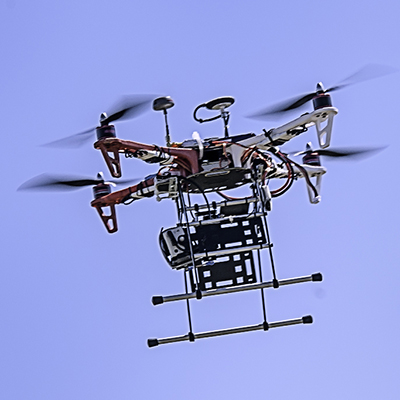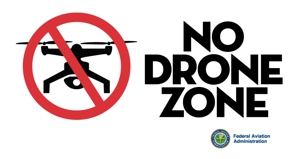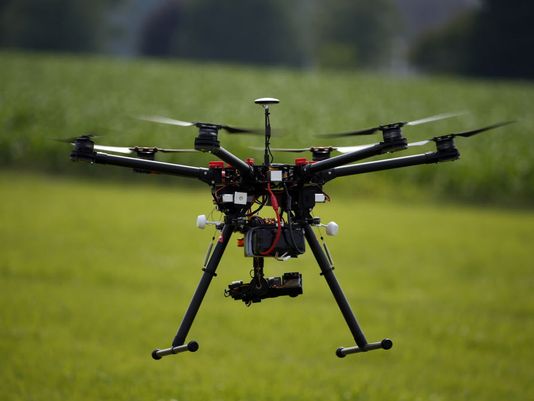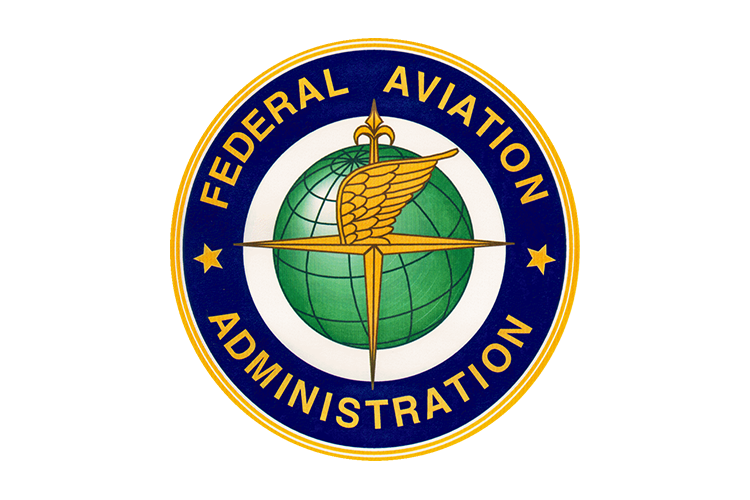
by Jack Upchurch | Feb 27, 2018 | AMA National News, UAV
A recent article describing a brewing controversy over Drone Flights published yesterday in The Hill. AMA members are urged to stay informed and fly responsibly : Last week, the Air Line Pilots Association, the National Air Traffic Controllers Association, and Airlines for America issued a letter to Congress calling for tighter regulation on drones. Responding to a video captured by a drone illegally flying within feet of a jet landing at McCarran International Airport in Las Vegas, the letter calls on Congress to get aggressive with hobby and recreational drone use. “The likelihood that a drone will collide with an airline aircraft,” the letter concludes, “is increasing.” The letter — echoing many of the news headlines surrounding the video — makes a common error: Observing one collision and a handful of “close calls” does not mean the probability of or the dangers presented by drone collisions have changed. Indeed, the best estimates show that the risk is extremely low, and the one confirmed collision that caused no injuries is consistent with an acceptable risk level. This may sound like technical nitpicking, but it has significant implications for the future of drone regulation. The signers of the letter call for the implementation of an onerous drone registry and mandates for all drones to be equipped with tracking technology, but they fail to demonstrate that drones pose a significant risk that requires new regulations, rather than better enforcement of some current ones. Understanding the need for regulation requires some knowledge of the risk drones pose. A 2016 analysis by our former Mercatus colleagues Eli Dourado and Sam Hammond approximated that risk by looking at incidents of birds striking airplanes in...

by Greg Carter | May 11, 2017 | UAV, Uncategorized
You don’t need permission from the FAA to fly your UAS (aka drone) for fun or recreation, but you must always fly safely. More than ever our AMA club flying fields and where can I fly be key to our sUAS recreational use. What are the safety guidelines for sUAS recreational users? Follow community-based safety guidelines, as developed by organizations such as the Academy of Model Aeronautics (AMA). Fly no higher than 400 feet and remain below any surrounding obstacles when possible. Keep your sUAS in eyesight at all times, and use an observer to assist if needed. Remain well clear of and do not interfere with manned aircraft operations, and you must see and avoid other aircraft and obstacles at all times. Do not intentionally fly over unprotected persons or moving vehicles, and remain at least 25 feet away from individuals and vulnerable property. Contact the airport and control tower before flying within five miles of an airport or heliport. (Read about best practices here) Do not fly in adverse weather conditions such as in high winds or reduced visibility. Do not fly under the influence of alcohol or drugs. Ensure the operating environment is safe and that the operator is competent and proficient in the operation of the sUAS. Do not fly near or over sensitive infrastructure or property such as power stations, water treatment facilities, correctional facilities, heavily traveled roadways, government facilities, etc. Check and follow all local laws and ordinances before flying over private property. Do not conduct surveillance or photograph persons in areas where there is an expectation of privacy without the individual’s permission (see AMA’s privacy policy). The following link is a must read because...

by Greg Carter | Aug 26, 2016 | UAV
Source: Bart Jansen, USA TODAY WASHINGTON – The first comprehensive federal rule governing drones takes effect Monday, when government and industry officials say thousands of pilots of remote-controlled aircraft are eager to start their engines. Earl Lawrence, director of the Federal Aviation Administration’s drone office, said 3,351 people signed up to take a test of aviation knowledge Monday —the first day possible — to certify themselves as drone pilots. Another hint of the pent-up demand is that 20,000 commercial drone operators have already registered to start flying, in anticipation of passing those tests that become available Monday, he said. “That’s a good indication we’re going to have a lot of people and a lot of aircraft operating from day one,” Lawrence told a group of dozens of congressional staffers Wednesday. The rule governing drones weighing up to 55 pounds will largely replace the special permission that FAA granted in recent years to 5,542 applications for commercial uses of drones, such as for aerial photography, utility inspection or crop observation. Special waivers could still be granted. But the rule basically allows pilots who pass the test to fly whenever they want up to 400 feet in the air during daylight hours while keeping the aircraft within sight of the pilot and away from other aircraft. Hobbyists have always been allowed to fly under similar guidelines, but commercial pilots have had to file cumbersome applications for special permission — until now. “Monday is a big day,” Lawrence said. “We’re expecting it to blossom tremendously.” The rule released in June was a long time coming. Congress ordered FAA in 2012 legislation to...

by Greg Carter | Jul 11, 2016 | UAV
Source: Drone Laws Blog Photo Credit: FAA The FAA’s recent announcement of Part 107, the final rule for commercial small unmanned aircraft systems (SUAS or drones), has justifiably received a lot of publicity and general praise. There has been little comment on what the rule does, or rather does not do, on the issue of federal preemption of state and local drone regulations. Federal preemption is what’s referred to in political circles as a “third rail” issue. Like the electrified third rail on a subway system, you don’t touch it unless you absolutely have to, and it can shock and hurt whatever or whoever touches it. For that reason, it was not surprising that the FAA’s 2015 SUAS NPRM did not mention preemption. Nonetheless, during the rulemaking proceeding the FAA received a number of comments on federal preemption. Most contended that without a preemption provision, state and local governments would continue to attempt to regulate small UAS operations, resulting in potentially conflicting rules and hampering the industry’s development. They argued that conflicting rules lead to confusion and litigation costs, burden commercial and hobbyist UAS users, and delay the adoption of UAS technology. Under the federal Administrative Procedure Act, the FAA had a duty to review the preemption comments and make at least some response showing that it had considered the arguments made by commenters. Continue reading the preemption issue in Part 107… ...

by Greg Carter | Jun 22, 2016 | UAV
Photo Credit: FAA Source: FAA The Federal Aviation Administration (FAA) is amending its regulations to adopt specific rules for the operation of small Unmanned Aircraft Systems (sUAS) in the National Airspace System (NAS) through a final rule. These changes address the classification of sUAS, certification of sUAS remote pilots, and sUAS operational limitations. This advisory circular (AC) provides guidance for conducting sUAS operations in the NAS in accordance with Title 14 of the Code of Federal Regulations (14 CFR) part 107. Summary as of May 2016, see above link for current details signed June AC 107-2 (PDF, 404 KB): Category Proposed Provisions Aircraft Requirements The sUAS must be registered with the FAA prior to flight. Aircraft markings are required. FAA airworthiness certification not required. However, the Remote Pilot in Command (Remote PIC) must maintain small unmanned aircraft systems (sUAS) in a condition for safe operation and prior to flight must inspect the UAS to ensure that it is in a condition for safe operation. 14 CFR part 107 does not apply to model aircraft that satisfy all of the criteria specified in Public Law 112–95 section 336. 14 CFR part 107 codifies the FAA’s enforcement authority in part 101 by prohibiting model aircraft operators from endangering the safety of the National Airspace System (NAS). Remote Pilot in Command (Remote PIC) Certification and Responsibilities Remote PICs are required to: • Be at least 16 years old • Be able to read, speak, write, and understand the English language (FAA may make exceptions for medical reasons) • Be in a physical and mental condition that would not...

by Greg Carter | Jun 22, 2016 | UAV
Photo Credit: FAA These Special Rules for Model Aircraft helps to maintain our exemptions for model aircraft. For more on the FAA’s final small UAS rule, we encourage you to read this USA Today story, “FAA completes landmark rules for commercial drones,” which includes a mention of AMA’s analysis of UAS sightings released earlier this month....







